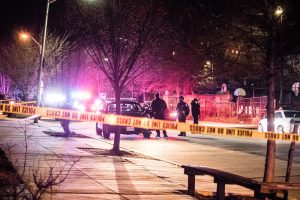“Time is yet another of God’s creations, and as such, it has a life of its own.”
—Rabbi Menachem Mendel Schneerson
Almost a quarter of a century ago, Pope John Paul II came to Baltimore and celebrated mass at Camden Yards, selling out the ballpark as today’s home team could only achieve by miracle.
The city buzzed with “Pontiff Fever,” and the newsroom of the Baltimore Sun — not yet gutted — had all hands on deck to cover every move made by the man born Karol Józef Wojtyła in Wadowice, Poland.
I remember staring down from the fifth floor of the paper’s old Calvert Street headquarters as the pope mobile cruised Centre Street toward the entrance to the JFX at Central Booking. As it did, a Jewish colleague from the copy desk — with sincere interest — asked why Roman Catholics make such a big deal over a mere mortal.
This was during my time covering the Orthodox Jews of Northwest Baltimore when — curious about whether Judaism had the equivalent of saints — I was told by Rabbi Moshe Heinemann that even Moses was “just a man.”
To my Jewish copy editor friend, I replied, “Don’t you think if Rabbi Schneerson decided to give a speech at Yankee Stadium that the place would be packed?”
“You’ve got a point there,” he said as the pope passed from sight and everyone went back to work.
Rabbi Menachem Mendel Schneerson is so esteemed that he is often referred not just as “the Lubavitcher rebbe,” but simply “the rebbe.” Some believed (and more wanted to believe) that the Chasidic leader was the long-awaited messiah, which he did not encourage nor endorse. And while he also did not presume spiritual authority over all the world’s Jews, the singular title “the rebbe” is not that much of a stretch from “the pope.”
Many Jews make pilgrimage to Schneerson’s former offices and Chabad Lubavitch headquarters at 770 Eastern Parkway in Crown Heights, Brooklyn, also a synagogue and sacred ground. Millions more — of all faiths — visit the Western Wall, a retaining wall of the Second Temple in Jerusalem.
All of which — the Polish pope, Schneerson, the Temple Mount and the humbling phrase, “Just a man” — was on my mind this summer on a visit to Fatima in Portugal where Catholic teaching holds that the Blessed Virgin Mary (mother of Jesus) appeared to three shepherd children on May 13, 1917.
As far as I can tell, Mary most often appears to children, typically poor and illiterate. The “big shots” in the Church almost never believe the kids, who endure all kinds of denigration, even within their families, but never capitulate. Later, a cathedral goes up on the spot where the kids say the apparitions took place.
Some 30 years ago, about half of my life so far, I made a similar visit to Lourdes in France, where in 1858, according to the Church, Mary appeared 18 times to the 14-year-old Bernadette Soubirous. (For the Hollywood version, see 1943’s “The Song of Bernadette,” which won Jennifer Jones a best actress Oscar.)
Back in 1990, I stumbled upon Lourdes while traveling from Paris to my grandfather’s hometown of Chapela in Galicia, Spain. It was nothing more than a very familiar dot on the map. The happenstance changed my life for the better. This past July 18th, again en route to Galicia, I made my way to Fatima to give thanks for the new life granted me and, in the Basilica there, prayed for a handful of family and friends who might benefit from the same correction granted me.
On the plane home from Lisbon, I sat across the aisle from a woman reading Cynthia Ozick’s 1971 story collection, “The Pagan Rabbi and Other Stories.” Long a fan of Ozick, I engaged the woman — Naomi Lindstrom of the University of Texas at Austin — in conversation.
A Jewish scholar in the Department of Spanish and Portuguese, Lindstrom said that she, too, was returning from a pilgrimage — to Belmonte, Portugal. She knew nothing of Fatima and I had never heard of Belmonte, about 30 miles from the Spanish frontier.
I learned that Belmonte is a community of Marrano Jews who, in the aftermath of Iberian expulsion, not only maintained their identity for more than 400 years but before 1917 — the year of the Fatima sensation as well as their own “discovery” by the outside world — the community believed they were the only Jews left in the world.
Will wonders never cease?
Rafael Alvarez can be reached via orlo.leini@gmail.com.





